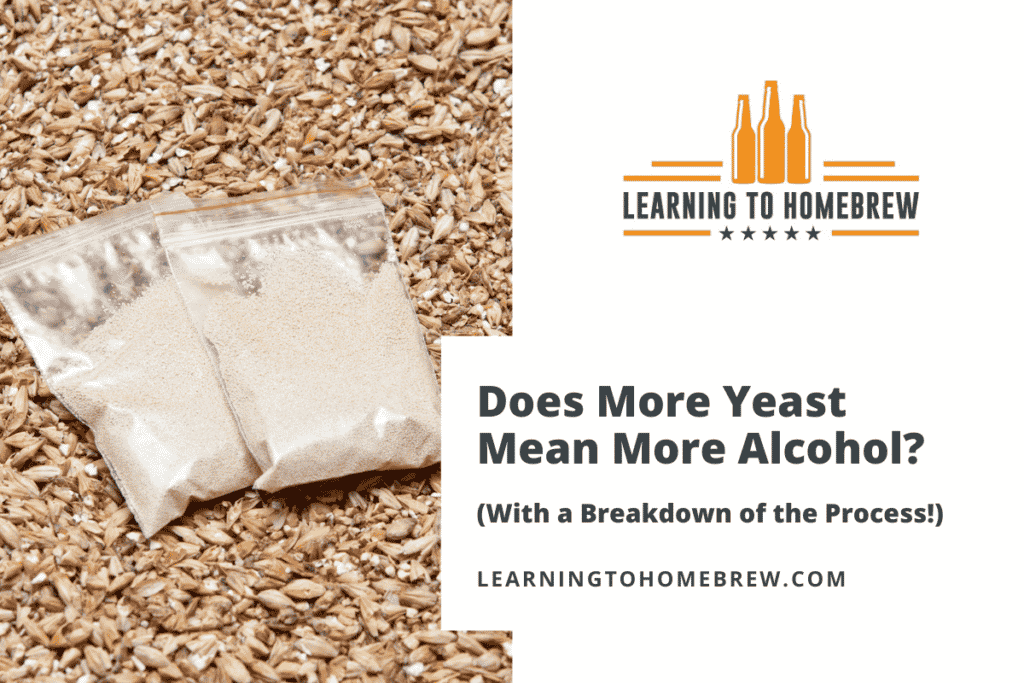A popular debate amongst homebrewers is how long past the stated expiration or best-by date on dry yeast packaging is the yeast actually good for. Good news: it’s longer than you might think!
Dry yeast normally has an expiration date about 36 months after the production date. Unopened dry yeast can typically last 2 to 4 years past the best-by date if frozen, while less extreme conditions can keep yeast viable anywhere from 6 to 18 months past that date.
Continue reading for more on how long it takes yeast to expire, how long you actually have before it’s no longer active, and how to tell if the yeast is still good to use for homebrewing. We’ve also included some tips on how to extend the life of your yeast.
Topics We Cover
Does dry beer yeast expire?
Yeast is a living organism and, like any living thing, will eventually die. When it’s alive and combined with wort, it converts the sugar in the wort to alcohol and carbonation. This chemical reaction is what makes beer. If the yeast is dead when it’s combined with the wort, fermentation will not start.
Many dry yeast manufacturers state that their products will expire about 36 months after the production date. Depending on the vendor you purchase from, this means you should have at least 2.5 years before your dry yeast will expire.
There is a difference between dead yeast and expired yeast. Dead yeast cannot start the fermentation process. Expired yeast, however, may still have life left to give.
Manufacturers will supply an expiration date on their brewer’s yeast. These companies base their expiration date on the expected lifespan of that particular strain of yeast. They are also relying on the consumer to store the yeast in a room temperature (or cooler) spot away from sunlight to keep the yeast alive during that time.
These time frames will vary from company to company, as well as from strain to strain. It is important to remember that different strains of yeast have different tolerances for cool and warm temperatures. While this is usually most important to take into consideration while pitching the yeast and during the fermentation process, it’s also worth it to note your particular strain’s proclivities before choosing a storage method.
Can you use expired dry beer yeast?
If you just found out that your dry beer yeast was expired, is that the end of the road?
Generally, you can use expired dry beer yeast in your homebrew because there is still a good chance it is alive and well The biggest concern with expired beer yeast is that the yeast have died and they won’t be able to ferment your wort.
It isn’t able to make you sick, so that’s one concern out of the way. In addition, it’s very easy to test out if the yeast is able to be reanimated before committing it to your brew.
Make a yeast starter with the yeast in question. Not only will you be able to see if it’s foaming (indicating the yeast is still alive and active), but you will also have the added benefit of a super-boosted colony of yeast to set your brew on the right track.
A starter using expired yeasts may need an extra couple of days to get going, so be patient. The same goes for once you’ve pitched the yeast into your wort — it might need a little more time than fresher yeast before fermentation starts.
How long does dry homebrew beer yeast last?
As discussed above, yeast is alive. Companies have to adjust their best-by dates to reflect the specifics of each strain and their production model.
Yeasts from the yeast and fermentation company Fermentis, for example, largely have a shelf-life of 36 months from the production date (unopened, that is). They recommend storage just below room temperature if you intend to use the yeast within six months. Lallemand Brewing guarantees their yeast up to 36 months from the production date as well and recommends using opened yeast immediately.
Whether you buy from one of those companies or use another producer’s dry yeast, consult the packet for expiration and best practices regarding storage.
Unopened
Regardless of where the yeast is stored — in a cool, dark place, in the fridge, or in the freezer — it is best to keep the yeast packet unopened. This prevents humidity and oxygen from adversely affecting the yeast cells.
Normally, unopened dry beer yeast will expire 36 months from the production date but can often be used past that date.
Opened
Just like in the case of beer, air and time are the enemies of yeast. Once you have opened up your yeast packet, you are racing against the clock to make that yeast last. You may be able to buy yourself some time by vacuum sealing or storing the yeast in an air-tight container, but it will not last as long as unopened yeast.
How to store your dry beer yeast longer
While manufacturers supply expiration or best-by dates, dry brewer’s yeast can often last even longer than officially recommended if it is being stored with care. In every case, it is best to store yeast unopened in order to extend its life. Storing opened packets of yeast is more of a gamble.
Refrigerating or even freezing unopened yeast will slow the degradation process even further, with as long as four years before the yeast is no longer active. These cooler temperatures also place the yeast in a dormant state, slowing the aging process.
As we discussed earlier, you can test questionable yeast for its viability by making a starter, so experiment with what works best for you. If you refrigerate or freeze your yeast, allow it to come to room temperature before making a starter. You don’t want to shock the yeast, which would negate your preservation efforts.
In a cool, dark place
Unopened yeast can also be stored at room temperature away from sunlight. This method will at minimum keep your yeast good until the best-by date and should tide you over for another several months beyond that.
If storing opened yeast at room temperature, it’s best to use it immediately.
In the fridge
Refrigerated unopened yeast can last anywhere from 12 to 18 months after the production date.
Opened but repackaged yeast (to discourage exposure to air) has about 4 months of life if kept in the refrigerator. Successful repackaging can include employing the use of Tupperware, freezer storage bags, or glass canning jars.
In the freezer
Unopened yeast sachets can be frozen to good effect for two to four years past expiration. Dry yeast is freeze-dried so there’s a negligible amount of water left within the cells. If the packet is unopened, it will take quite a while for such cold temperatures to have a negative effect on the cells’ integrity by way of that water.
Sealing opened yeast in an airtight container may buy up to four months in the freezer.
Since expired yeast will not make you sick, in my opinion, it’s worth it to make a starter out of yeast that is potentially past its prime rather than automatically throwing it away. This buys you a little more time, as well — a yeast starter can last at minimum a week in the fridge.





